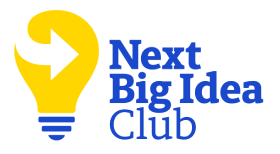Paula Davis is the Founder and CEO of the Stress & Resilience Institute. She is a globally recognized expert and advisor regarding burnout prevention at work and building resilient teams. Previously, she practiced law, and then during her post-graduate training for her psychology master’s degree, she was selected to be part of the University of Pennsylvania’s faculty teaching resilience skills to soldiers for the Army’s Comprehensive Soldier and Family Fitness program.
What’s the big idea?
To increase well-being, motivation, engagement, resilience, or the many words that describe thriving teams, we must understand that leadership behaviors drive employee experience. Leaders can control the conditions that allow for sustainable high performance. We need to advance the conversation beyond individual remedies for burnout and address root causes of stress and disengagement.
Below, Paula shares five key insights from her new book, Lead Well: 5 Mindsets to Engage, Retain, and Inspire Your Team. Listen to the audio version—read by Paula herself—in the Next Big Idea App.
1. Activate sticky recognition.
When people are keenly aware of their impact at work, it ignites a powerful psychological fuel. Sticky recognition is a way for leaders to show an individual or team their impact, as well as awaken something even deeper: a sense of mattering. It’s a fundamental human need to know that we matter. Mattering emerges from a combination of achieving goals that are personally important and being noticed or recognized for that work.
There are two tiny noticeable things (TNTs) that can activate sticky recognition. The first is saying a thank you, plus a little bit of extra added to it. That extra piece is the why. Instead of only saying “thank you” to someone, you can say to them, “Thank you. The way you summarized those reports helped me see the key takeaways and I was able to have a much clearer conversation with the CEO because of it.” That little extra piece sticks or resonates beyond the thank you.
The second TNT that activates sticky recognition is calling out people’s strengths. For instance, I was leaving a restaurant with a friend when I noticed a different friend walking down the sidewalk. I hadn’t seen her in a long time, so I ran up to her and gave her the biggest hug, saying, “Sandra, it’s so great to see you.” When I got in the car, the friend I had gone to dinner with said, “I really like the way your face lights up when you see your friends.” Being complimented on that kindness in me was very powerful.
2. Amplify A, B, C needs.
A stands for autonomy, B stands for belonging, and C stands for challenge. This trio forms the basis for several wellbeing models. There are several TNTs that can expand the A, B, C needs of your team.
For autonomy, we oftentimes think solely about where people work and when people work, but I want you to think about how you can give people more decision-making authority. Can you allow them to be more creative? Can you allow them to take more control? Being able to expand autonomy is great. A TNT for autonomy is setting context for rules and goals. Give the rationale, the backstory that explains why a change is happening or why they are assigned a particular project. Or tell a little bit more about the story of a client the company is working with.
“This trio forms the basis for several wellbeing models.”
Belonging comes next. A sense of connection is important and needs to be fostered more intentionally in hybrid or remote work models. One of the TNTs that amplify connection is scheduling unstructured time with someone, just 10 or 15 minutes every couple of weeks, to ask what’s on their mind. Or, a much more powerful question would be, “What has your attention right now?” Over time, this inquiry allows leaders to understand their team in a deeper way.
People want to feel a sense of opportunity and growth from their work—they want the right challenge. If they don’t see a clear path for that, they will not hesitate to leave the organization. A TNT for this is helping them seek mastery experiences. Help them understand or get to know different skills that they might want to consider developing to reach their goals. Then, suggest opportunities that allow them to pursue those skills. If someone says they want to get better at public speaking, maybe you can offer that they can lead a team meeting or present at a conference.
3. Build workload sustainability.
There are a lot of things within leaders’ control that can make workloads sustainable. It comes down to two things: establishing teaming practices and recovery practices. A TNT for teaming practices is conducting a meetings audit. Take a step back and look at how many meetings you take part in. How many meetings are people on your team involved with? Are all those meetings necessary? Is there another way that information can be communicated? Can meetings be shorter? Can you add an agenda so that there is structure and clarity?
4. Design systemic stress resilience.
Resilience is one of the most misunderstood words in our world of work. Basically, resilience is meant to help people develop their capacity to manage challenges, problems, failure, setbacks, and grow from those obstacles. Resilience lives at the individual level, team level, and organizational level. Resilient teams show four big capacities:
- Team efficacy. They have a lot of collective confidence in their ability to achieve goals and manage challenges.
- Clear roles and responsibilities. Clarity increases autonomy.
- Improvisation. If they encounter a challenge, they’re able to chat, pivot, and proceed with a new game plan.
- Psychological safety. This allows for cohesion, trust, and the ability to discuss failure when things don’t go right.
A TNT for expanding your team’s resilience is to debrief together after micro-challenges. Don’t wait for the big project to finish. Whenever your team encounters a minor stumble, use that as an opportunity to come together and talk.
5. Promote values, alignment, and meaning.
Values misalignment is one of the six drivers of burnout. Values need to be lived. People want to see their leaders walking the talk. Research shows that there are six ways that leaders can build a sense of values, alignment, and meaning at work:
- Communicate the work’s bigger impact.
- Recognize and nurture potential.
- Foster personal connections.
- Discuss values and purpose during hiring and onboarding.
- Model values-based behavior.
- Give employees autonomy.
You’ll notice that the A, B, C needs are part of this structure as well. One TNT that you can use for yourself and encourage within teams is to revive a dormant connection. Who is someone you had a strong connection with in the past, but the relationship has been quiet for a while? Reach out to that person and revive that connection.
Enjoy our full library of Book Bites—read by the authors!—in the Next Big Idea App:










